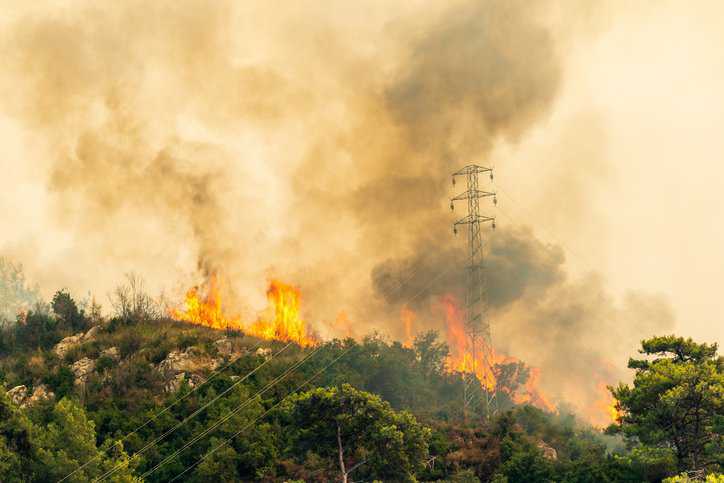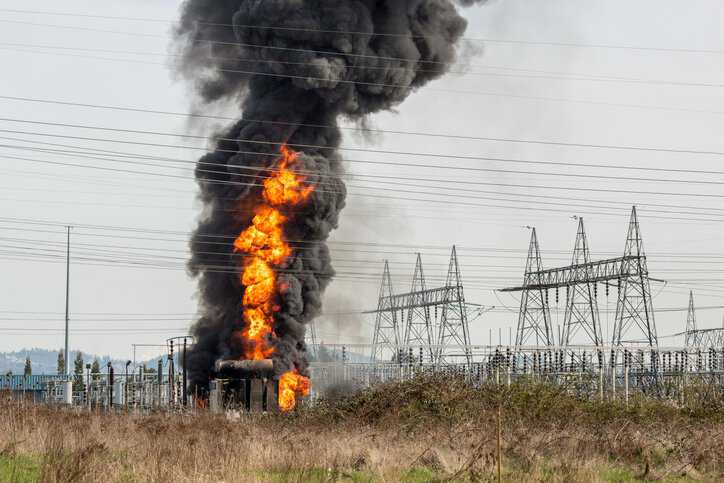AMPP TR1505-2022: Wildfires Damage to Combustion Products

Wildfire frequency and severity continue to pose risks to transmission and distribution line structures—thereby raising concerns for power utilities. In part due to climate change, extinguishing wildfires is becoming even more challenging in dry, warm, and windy weather conditions that can spread a fire at terrifyingly fast rate. Assuring future asset integrity management actions for the power industry is paramount in implementing proper mitigation strategies in the event of a wildfire. AMPP TR1505-2022: Adverse Impacts of Wildfires on Power Industry Steel Structures covers the impact of wildfires on combustion products, such as transmission and distribution line structures.
What Is AMPP TR1505?
AMPP TR1505-2022 communicates the effects of wildfires heat and combustion products on corrosion resistance, material properties, and mechanical integrity of power transmission infrastructure. The report also identifies next steps to research, develop, and implement future asset integrity management actions for the power industry.
AMPP TR1505-2022 addresses the following general topics:
- Wildfire vulnerabilities and impacts
- Materials effects for steel, coatings, and concrete
- Power infrastructure risks and impacts
- Asset integrity risk assessment guidance
- Recommended industry actions
- Association for Materials Protection and Performance (AMPP) activities proposed
Effects of Wildfires on Structural Steel
The mechanical properties of steel—such as tensile strength, yield strength, ductility, hardness, and toughness—are temperature-dependent and as such could be negatively affected when exposed to the heat of a wildfire. A reduction in these properties could reduce the strength capacity of the structure to a level below a minimum factor of safety, particularly if the structure was previously weakened by corrosion, mechanical damage, or severe loading events.
The extreme heat of wildfires can also cause a reduction in structural strength and stiffness. The heat can even melt zinc-based galvanized protective coatings on steel, leaving the steel vulnerable to accelerated corrosion after the fire event. This can even lead to the collapse of lattice towers at some later time.
How Can Power Lines Spark Wildfires?
There are various mechanisms through which electrical operations can spark wildfires, both on transmission and distribution grids. Power lines can ignite wildfires in several ways:
- Downed Lines: Power lines can fall for many reasons (e.g., by a falling tree or strong winds) and they remain energized as they fall to the grass below until the utility company shuts it off. In hot and dry climates, the surrounding vegetation that the line comes in contact with can spark a fire.
- Vegetation Contact: When a tree becomes overgrown and its branches expand and reach the power lines, a fire can ignite. Also, a tree branch lying between two conductors can also produce high-temperature electrical arcs.
- Conductor Slap: Power lines are strategically spaced apart to prevent them from coming into contact with one another. A conductor slap refers to the case where wind or other outside factors occur and the lines do come into contact. When a conductor slap occurs, it creates high-energy sparks and spits out hot metal particles that can start a fire on the ground.
- Repetitive Faults: Repetitive faults refers to a situation where the same type of malfunction or error occurs repeatedly within a system or component. An example of repetitive faults for a transmission line can be low-hanging branches touching a powerline for an extended period or wind causing the powerlines the repeatedly hit against one another causing a conductor slap.
Utilities are becoming more cognizant of the fire risk and doing extremely detailed modeling of where the risks are and how ensure that none of their assets, like transmission lines or distribution lines, are igniting these wildfires.

How Can Wildfires Damage Transmission and Distribution Lines?
Distribution lines are buried underground more often than transmission lines, which protects them from wildfire damage. Aboveground lines are therefore vulnerable to wildfires and smoke, which can automatically trip a transmission line out of service. Wildfires can in particular damage transmission and distribution lines by directly contacting them with burning vegetation, causing the lines to overheat and potentially sag. By dropping burning debris onto the lines or by creating extreme heat that weakens the structural integrity of the towers and conductors, wildfires can lead to potential failures and outages. Additionally, the smoke and soot from a wildfire can accumulate on insulators, reducing their effectiveness and increasing the risk of arcing.
AMPP TR1505-2022: Adverse Impacts of Wildfires on Power Industry Steel Structures is available on the ANSI Webstore.






